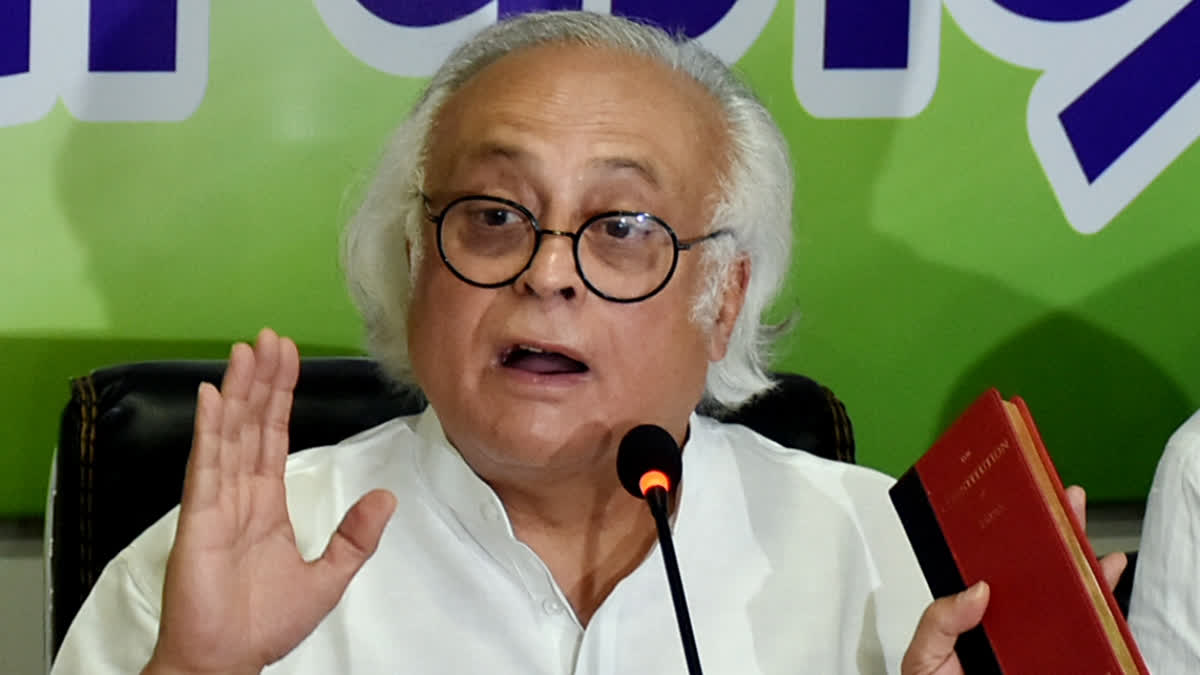New Delhi: The Congress on Saturday attacked the government over India's economic growth slowing to a near two-year low, saying the country's medium and long-term economic potential is "eroding rapidly" and asked how long will the grim reality of stagnant wages for crores of workers continue to be ignored.
Congress general secretary in-charge communications Jairam Ramesh said the GDP growth figures released last evening for July-September 2024 are much worse than anticipated, with India recording a measly 5.4% growth and consumption similarly growing by an unimpressive 6%.
"The non-biological PM and his cheerleaders are wilfully blind to the causes of this sharp slowdown, but a new report on 'Labour Dynamics of Indian States' released by a leading Mumbai-based financial information services company, India Ratings and Research, on the 26th of November 2024 reveals its real cause: stagnant wages," Ramesh said in a statement.
The Congress leader pointed out that the report uses Periodic Labour Force Survey (PLFS) data to show that overall real wage growth at the national level has been flat at 0.01% over the last five years. In fact, the workers in Haryana, Assam and Uttar Pradesh have seen their real wages decline in the same period, he said.
This is hardly the exception, nearly every piece of evidence points to this same damning conclusion that the average Indian can buy less today than they could 10 years ago, Ramesh said. "This is the ultimate root cause for India's growth slowdown, and multiple sources of data have now confirmed this wage stagnation," he asserted.
Citing Labour Bureau's Wage Rate Index, he said real wages for the labourers stagnated between 2014-2023 and in fact declined between 2019-2024. Ramesh further cited the Ministry of Agriculture's Agricultural Statistics and said that under former prime minister Manmohan Singh, real wages for agricultural labourers grew at 6.8% each year.
"Under Narendra Modi, real wages for agricultural labourers declined by minus 1.3% each year," he said. Citing the Periodic Labour Force Survey Series, Ramesh said the average real earnings over time have stagnated between 2017 and 2022 across all employment types' salaried workers, casual workers and self- employed workers.
Citing the Center for Labour Research and Action, Ramesh said the real wages of brick kiln workers have stagnated or declined between 2014 and 2022. Brick kilns involve intensive labour and are a low-paying work of last resort for India's poorest, he said. When real wages stagnate or fall as they have in the last few years, consumption will also be stagnant, he pointed out.
"The recent rush of statements by senior leaders from India Inc about slowing consumption are only the symptom of this deeper malaise. This slowdown will have severe consequences for us: without adequate growth in consumption to assure them of a market for their products, India's private sector will be unwilling to invest in new production," Ramesh argued.
"Not surprisingly, the quarterly GDP growth numbers reveal that private investment - which has to drive accelerated economic growth - continues to be extremely sluggish. Our medium and long-term economic potential is eroding rapidly," he said. The Congress leader pointed out that the fundamental cause for this is stagnant wages for crores of workers.
How long will this grim reality continue to be ignored, Ramesh asked. "The people of India continue to live in hope while the Prime Minister generates hype," he said. India's economic growth slowed to near two-year low of 5.4 per cent in the July-September quarter of this fiscal due to poor performance of manufacturing and mining sectors, but the country continued to remain the fastest-growing large economy, data showed on Friday.
The gross domestic product (GDP) had expanded by 8.1 per cent in the July-September quarter of 2023-24 fiscal, he said. The previous low level of GDP growth at 4.3 per cent was recorded in the third quarter (October-December 2022) of financial year 2022-23. However, India remained the fastest-growing major economy as China's GDP growth in the July-September quarter this year was at 4.6 per cent.



